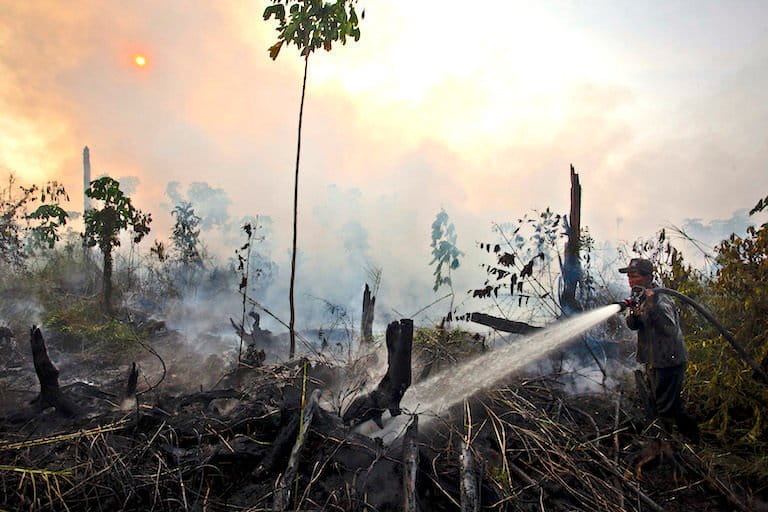Conservation is complex. If it were easy, problems like the extinction crisis, human-wildlife conflict, overexploitation of forests and oceans, and habitat degradation and loss would be resolved already.
Conservation’s complexity arises from the need to address multiple, often conflicting, objectives that span disciplines from ecology to economics to human welfare. Something that may seem straightforward on the surface, like saving orangutans from extinction, actually requires understanding the great apes’ ecological needs, reining in the wildlife trade, encouraging behavior change among hunters, controlling out-of-control fires, and addressing both direct and indirect drivers of deforestation, which may be affected as much by local issues like basic nutritional needs as national issues like corruption and international issues like overseas demand for palm oil. Silver bullets don’t exist.

Synchronicity Earth, a U.K.-based charity, recognizes this and incorporates the idea of complexity into its strategy, looking to opportunities to build connections between disparate areas and seeking “overlooked and underfunded species, regions, and ecosystems.” Synchronicity Earth does this through a combination of communications, facilitating and enabling connections between disciplines, and rallying financial resources in support of protecting and restoring nature.
Jessica Sweidan, who founded Synchronicity Earth with her husband, Adam, in 2009, says this approach emerged out of the understanding that “there were no silver bullets.”
“We started to understand the challenges, and knew that we needed to be supporting a range of interventions: supporting local communities and livelihoods; educating about environmental threats; collecting data about endangered species; regenerating ecosystems; addressing supply chains, global policy and financial systems; shifting consumer culture and habits; as well as rethinking philanthropy and even conservation itself — in order to effect lasting change,” she told Mongabay.

Sweidan adds that they started surveying the philanthropic landscape in the late 1990s (she and Adam started the Synchronicity Foundation in 2000), but when they shifted to the environment, they quickly saw biodiversity conservation wasn’t receiving the level of resources that other issues were attracting.
“When we first stepped fully into ‘the environmental arena’ it became very clear, very quickly, that biodiversity loss was not only on track to become one of the biggest issues of our time, but that biodiversity conservation was a grossly underfunded sector,” she said. “It was a major gap.”
“There wasn’t and there still isn’t enough funding going into conservation,” she continued, noting that only 3-4% of U.K. philanthropy goes to environment-related causes. “For far too many years, supporting conservation was a very niche activity: we all failed to understand the inextricable links between the natural world and ourselves.”
Sweidan says that Synchronicity Earth’s prioritization of underfunded areas within the conservation sector “means that we are focused on the gaps within the gaps.”
“Conservation is often seen as something of a luxury, connections are seldom drawn between protecting and restoring nature and progress towards U.N. SDG targets, for example, or between diverse and abundant ecosystems and human health,” she said.

But the COVID-19 pandemic may change that siloed view.
“This last year has highlighted the interconnectivity of everything in a way that we could never have articulated without going through it. Sectors that were for some, seemingly unrelated, are now talking to each other. There are enormous opportunities in the finance sector around ESG. And an ever-increasing number of people are becoming more aware of where they invest their money, the consumer choices they make, and companies are having to react to this.”
Sweidan talked about Synchronicity Earth and more during a February 2021 interview with Mongabay founder and CEO Rhett A. Butler.

